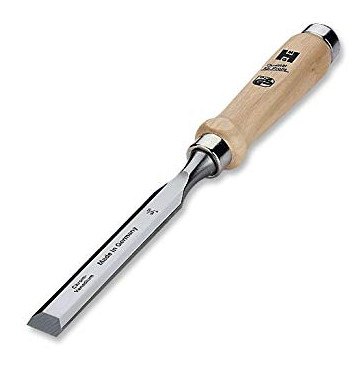The Essential Ironworker Tools List: 13 Different Types & Their Uses
-
- Last updated:


There are a lot of different tools needed to do ironwork. We have put together a list of what we believe to be the most important for basic projects. You will need to add others for bigger and more detailed projects.
1. Forge
A forge is like a fireplace. It is where ironworkers heat up the metal that they want to manipulate.

2. Anvil
The anvil is the flat surface area used to forge the metal into the shape you want.
Your anvil should be at a comfortable working height for you. The right height can be found by standing with your arms hanging down by your sides, fingers curled up, yet still relaxed. The top of the anvil should just touch the bottom of your fingers.
Anvils can be very expensive, so you may want to consider purchasing a new one if you are just starting out.

3. Hammers
When you’re first starting to do ironwork, a basic ball peen or cross peen hammer will do. You can usually find these at any hardware store.

4. Vises
There are two types of vises: the post vise and the machinist’s vise. Make sure to get a post vise, because it is made to stand up to constant hammering. Machinist’s vises are not as heavy-duty and can get damaged if pounded too much.

5. Tongs
Tongs are used to hold the hot metal that you are working on. It is important to have the right size of tongs for each individual piece. We recommend that beginners start out with two sets of tongs: one for smaller items, and one for larger items. As you do more ironwork, you will need more tongs, but you will know how to make your own by then.

6. Cutting Tool
The cutting tool is a wedge-shaped piece of metal that is attached to the top of the anvil. Place your hot metal over the cutting tool and pound with your hammer to cut your metal into two different pieces.

7. Bending Tool
The bending tool is U-shaped and is attached to the top of the anvil. It acts like a mold, allowing you to bend hot metal around it.

8. Punch
A punch is a metal rod that has a sharp point on one end, while the other end is flat. The sharp end is put against the hot iron, while the blunt end is struck with a hammer to punch holes in material.

9. Drift
A drift is used to widen and shape punched holes into the specific dimensions that you want. The sharp end is now rounded, but still starts out small and gets larger in diameter to ensure that it can fit into the hole you have punched.

10. Mandrel
A mandrel is used to mold the actual piece you are working on into the correct size and shape.

11. Center Punches
A center punch is used to mark the center of where you want your hole to be. Punches can move around a bit, and the center punch keeps you where you want to be.

12. Chisel
A chisel can be used to make slits in the material you are working on. Just place the blade where you want it and hit the back end with a hammer.

13. Rasp
A rasp is a long metal file that is used to file any rough edges off metal pieces.

While this is certainly not an exhaustive list of ironworking tools, we believe that these will get you headed in the right direction.
Featured Image Credit: StockSnap, Pixabay
Contents

